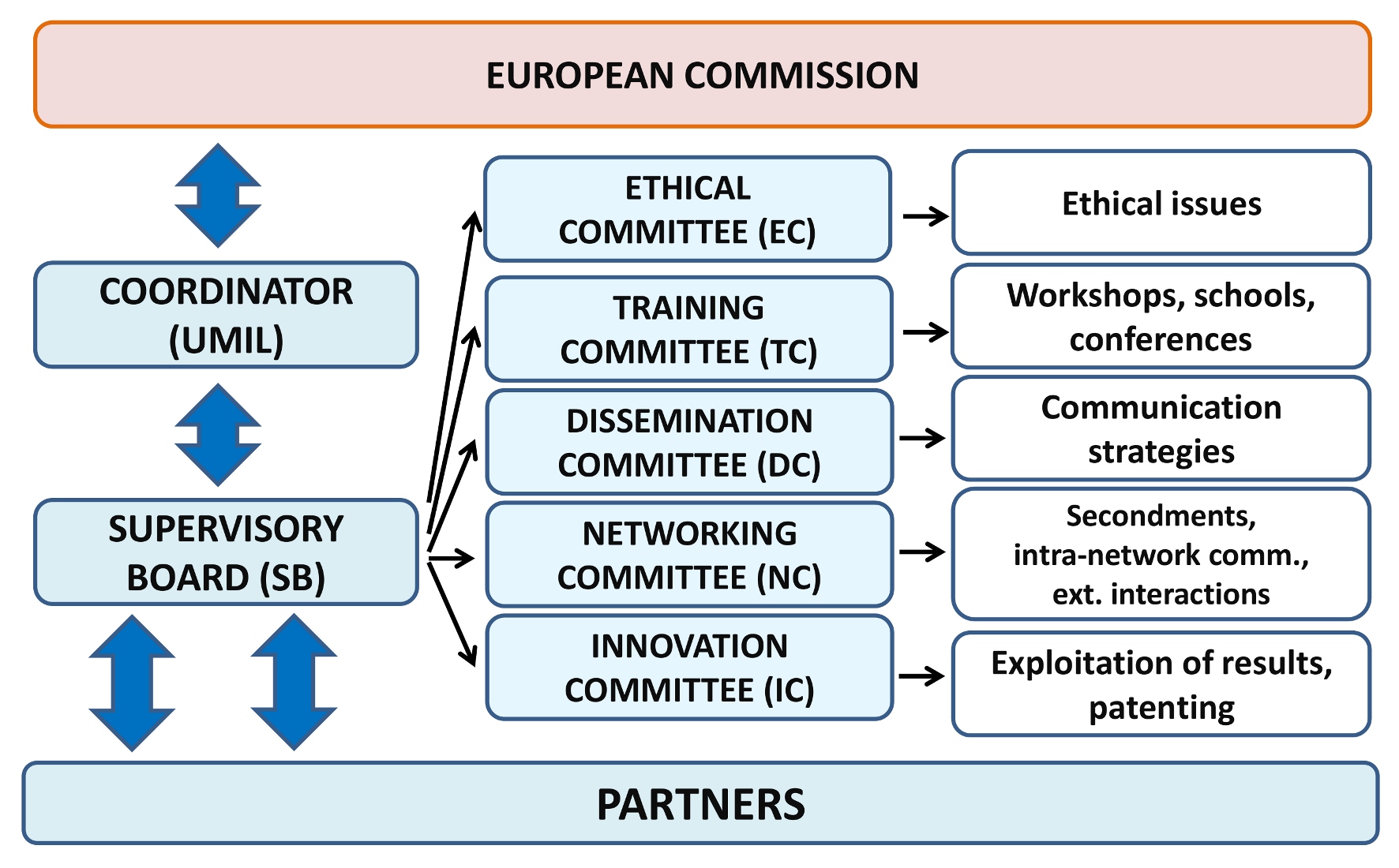Project description
Phys2BioMed - Biomechanics in health and disease
EU H2020-MSCA-ITN-2018 - ETN n. 812772 (from 2019-01-01 to 2022-12-31)
Mechanical properties for biological samples may provide an insight over many physiological and pathological processes. It is possible to bring as an example the cancer and of its mechanical properties change during the cell invasion.
Defining standardized procedures for nanomechanical measurements and providing, in the longer-term, a data bank of mechanical fingerprints of diseases, can lead to the development of effective early-diagnostic tools.
Phys2BioMed is an ITN that has the purpose of providing scientific and technological outcomes on biomechanics, and the mechanical determinants of diseases.
The key advantage is merging diverse competences at European level, from different fields like nanoscience and nanotechnology, physics, biology, and medicine. In this way ESRs are exposed to the non academic and private sector.
What we want to tackle is to establish the mechanical and rheological fingerprints of cells and tissues and their alterations in diseases of cells and tissues. The main approach used will be based on atomic force microscopy (AFM) coupled to different methods such as microfluidic cytometry, non-AFM nano-indentation and structural inspection.
Among the other objectives there is the establishment of procedures, models, and standards for assessments of cell and tissue nano-mechanical properties. Databases will be launched to be open to the scientific community. Finally, we want to correlate the output of the mechanical and rheological phenotyping of clinical samples (ECMs, cells, tissues) to specific clinical features of the selected diseases, so to define heuristic mechanical fingerprints to be used as early-diagnostic cues.
Objectives of the research programme
General objectives
- Provide excellent training-through-research in the multidisciplinary and emerging field of mechanical phenotyping of cells and biological tissues for diagnostic purposes, with particular attention to the maximisation of the employability of trainees, based on:
- Access to cutting-edge technology and science within a multidisciplinary network.
- Exposure to non-academic and private world, and major players in the health system (hospitals, clinics, bio- banks).
- Acquisition of complimentary and career development skills.
- Standardisation and validation of nano-mechanical characterisation procedures of clinically relevant samples provided by medical partners based on atomic force microscopy (AFM) and other techniques, with focus on:
- Mechanical and rheological characterisation of single cells, extracellular matrices (ECMs), and tissues.
- Evaluation of other techniques (micro- and nano-indentation, microfluidic deformability tests) for mechanical phenotyping of clinically-relevant samples.
- Identification of main features of a novel class of nano-mechanical tools suitable for clinical applications.
- Identification of measurable mechanical markers of diseases selected by the medical partners according to their impact on health and society, for the preliminary definition of early-diagnostic cues of clinical relevance, with particular attention to:
- Establishing the specificity and sensitivity of the mechanical properties with respect to selected diseases
Specific scientific and technological objectives
- To establish the mechanical and rheological fingerprints of cells and tissues and their alterations in diseases. Phys2BioMed will produce comprehensive nano-mechanical and rheological phenotypes of cells and tissues (WP1) to define mechanical fingerprints of specific diseases (WP6). The main approach used will be based on atomic force microscopy (AFM) coupled to different methods such as microfluidic cytometry, non-AFM nano-indentation and structural inspection (WP5).
- To establish procedures, models, and standards for assessments of cell and tissue nano-mechanical properties. The approach will reside in defining standard procedures for mechanical tests (WP2), sample preparation (WP3) and data analysis (WP4). To this aim, a robust and reproducible method allowing to measure viscoelastic parameters of cells and tissues (WP2), sample preparation procedures to allow the circulation of specimens and the conservation of their structural/mechanical properties (WP3) and open data processing software will be developed (WP4). To ascertain high efficiency, we will benefit from mechanical modelling (WP4) of cells and tissues, and from comparison with alternative technical approaches (WP5). Databases will be launched to be open to the scientific community (WPs 4, 6).
- To correlate the output of the mechanical and rheological phenotyping of clinical samples (ECMs, cells, tissues) to specific clinical features of the selected diseases (WP6), so to define heuristic mechanical fingerprints to be used as early-diagnostic cues.
Governance of the project

Scientific Advisory Board (SAB)
- Prof. Victoria Sanz-Moreno, Professor of Cancer Cell Biology, Queen Mary University of London. http://www.sanz-moreno-lab.co.uk/.
- Prof. Gijsje Koenderinck, Bionanoscience Department of the TU Delft. https://www.tudelft.nl/en/faculty-of-applied-sciences/about-faculty/departments/bionanoscience/research/research-labs/koenderink-lab/
- Prof. Etheresia Pretorius, Department of Physiological Sciences, Stellenbosch University, Western Cape, South Africa. http://www.resiapretorius.net
- Dr. Ioanna Mela, Department of Chemical Engineering and Biotechnology, University of Cambridge. https://www.ceb.cam.ac.uk/directory/ioanna-mela.
 Biomechanics in health and disease:
Biomechanics in health and disease: